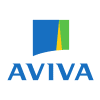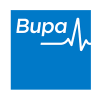Varicose Veins
Home » Varicose Veins
Award winning dermatology service, with over 20 years on experience
Short waiting lists, on some occasions offering same week appointments
Safe environment, in Care Quality Commission approved facilities
Varicose Vein Treatments Include:
Everything you need to know ABOUT varicose vein removal
WHAT ARE VARICOSE VEINS?
Up to 40% of women and 20% of men suffer from symptoms of varicose veins, making the disease of the veins one of the most prevalent conditions today. Varicose veins are caused by weak vein walls and valves. Women are more likely to have varicose veins, particularly as being pregnant leads to an increased risk.
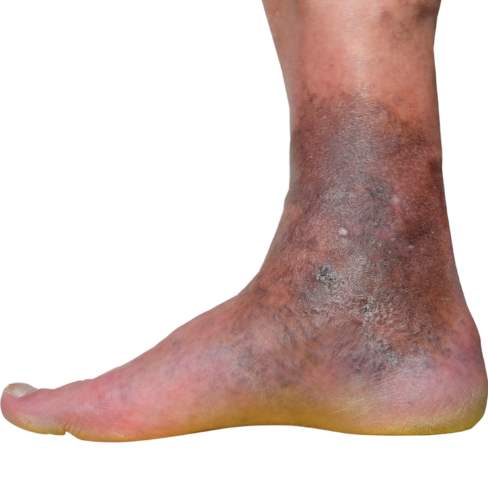
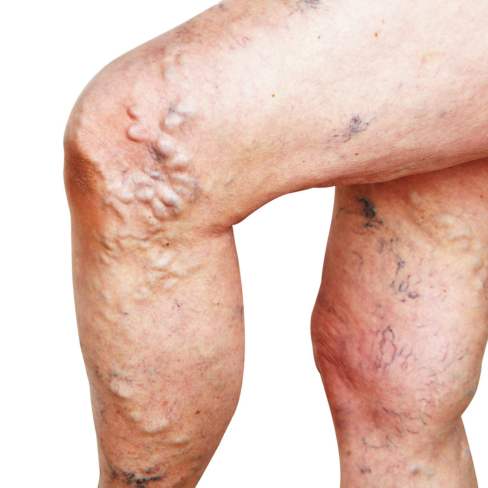
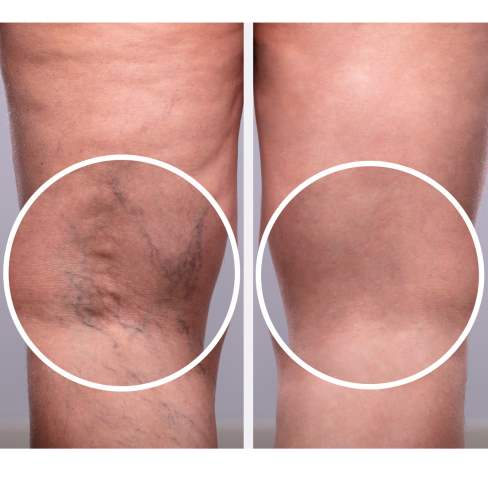
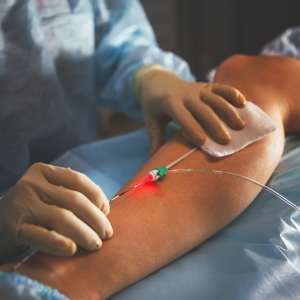
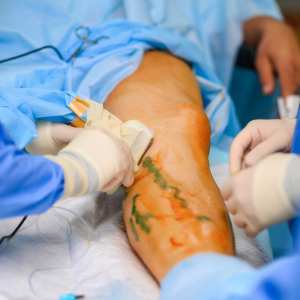
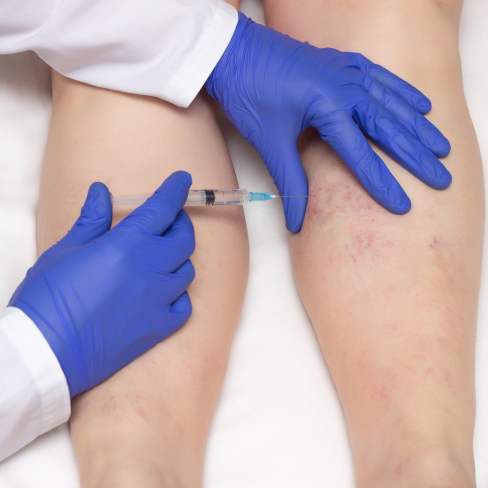
HOW ARE VARICOSE VEINS TREATED?
ENDOVENOUS LASER ABLATION (EVLA)
Endovenous Laser Ablation (EVLA) is a minimally invasive procedure designed to treat varicose veins and venous insufficiency. Using laser energy, the affected veins are closed and sealed from within. EVLA is widely considered a safe and effective alternative to traditional vein stripping, offering benefits such as a faster recovery time, minimal scarring and a lower risk of complications.
SCLEROTHERAPY
Sclerotherapy involves injecting a solution, often foam, directly into the affected vein. This solution reacts with the vein wall, causing the vein to inflame and scar, forcing blood away to healthier veins. This eventually closes off the vein and the collapsed vein is reabsorbed into local tissue and eventually fades. After sclerotherapy, treated veins tend to shrink and disappear within a few weeks, although occasionally it may take a month or more to see the full results. Sclerotherapy is usually carried out under local anaesthetic, meaning you will be able to go home the day of the procedure.
MICROSCLEROTHERAPY
PHLEBECTOMY
Phlebectomy, which is also known as stab avulsion, microphlebectomy or ambulatory phlebectomy, is a technique used to remove varicose veins. In this procedure, 1 or 2 tiny cuts are made in the skin, the affected vein is identified, cut and removed through the incisions using a suction device. This treatment can either be carried out using local or general anaesthetic and you may experience some bleeding or bruising in the weeks following treatment.
THE ELVES RADIAL™ LASER PROCEDURE
WHERE CAN I GET varicose vein removal?
We currently treat and remove varicose veins in our Wimbledon & Raynes Park, Oxford and Cheltenham clinics. To book an appointment with either clinic, please call 0800 048 9230 and a member of the team will talk you through your consultation and then book you an appointment with our consultant vascular surgeon who specialises in varicose vein treatment.
FREQUENTLY ASKED QUESTIONS
WHAT ARE THE CAUSES OF VARICOSE VEINS?
HOW TO PREVENT VARICOSE VEINS?
WILL VARICOSE VEINS GO AWAY ON THEIR OWN?
Varicose veins will not go away on their own. There are things you can do at home to help reduce your symptoms such as exercising regularly, avoiding standing up for long periods of time, elevating the affected area when resting or wearing compression stockings. For more severe cases where they are causing you pain or more serious complications could arise, a consultant will recommend a suitable treatment for you.
HOW LONG DOES IT TAKE TO RECOVER FROM VARICOSE VEIN TREATMENT?
ARE VARICOSE VEINS DANGEROUS?
REQUEST A CALL BACK
Please fill in this form and one of our team will give you a call back to arrange a consultation with one of our expert dermatologists.
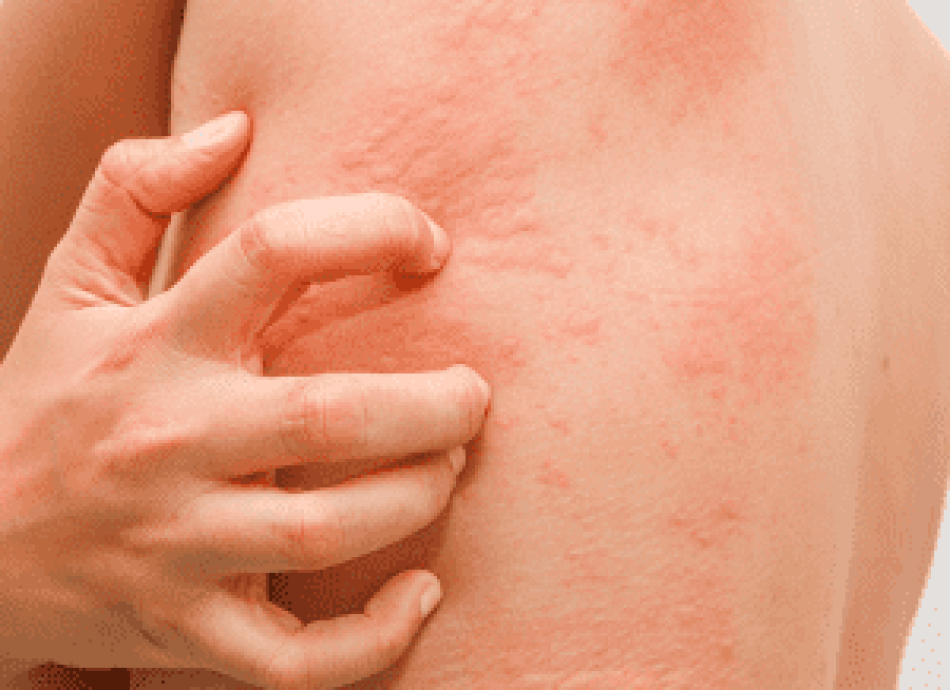
HEAR FROM OUR PATIENTS
WHY TREAT YOUR VARICOSE VEINS AT STRATUM DERMATOLOGY CLINICS?
Here at Stratum Dermatology Clinics, we understand how skin conditions can reduce confidence and self esteem. Varicose veins can cause pain and discomfort and can lead to other health complications such as skin ulcers. They are also very unsightly and can be removed for aesthetic reasons.
We work with leading experts in the field of dermatology to ensure you have the best experience and treatment. Stratum Dermatology Clinics are regulated by the Care Quality Commission, are part of the British Association of Dermatologists and are top rated by patients on Doctify so you can assure safe and effective varicose veins treatment with us.
varicose vein treatment oxford
Stratum Clinics Oxford Cantay House 38-39 Park End Street Oxford OX1 1JD 0800 048 9230
varicose vein removal Cheltenham
Stratum Clinics Cheltenham 5 Ormond Terrace Cheltenham GL50 1HR 0800 048 9230
varicose vein removal london
Stratum Clinics Wimbledon & Raynes Park Raynes Park Health Centre 1 Lambton Road Wimbledon SW20 0LW 0800 048 9230

